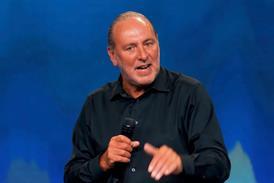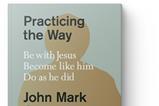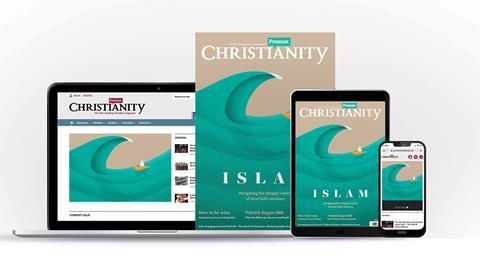As the Baptist Union votes to uphold its historic teaching and not permit ministers to enter into a same-sex marriage, two Baptist ministers discuss their differing views. Here, Chris Goswami explains why he believes marriage is between one man and one woman. In response, Ashley Hardingham explains why he holds a different position

This week, the Baptist Union Council, following two years of consultation with individuals and churches, announced it will not change its existing rules on marriage.
Chris Goswami is Associate Minister at Lymm Baptist Church and takes a traditional view on marriage. A stone’s throw away, Ashley Hardingham is Lead Minister at Altrincham Baptist Church and has taken his church through an 18-month conversation to a “fully inclusive” view. They are good friends with contrasting opinions. Both feel that being able to disagree well is more important than their opinions. They have offered the following articles to Premier Christianity in the hope of illustrating the importance of continuing dialogue in a spirit of love and openness.
What follows is Chris Goswami’s perspective. You can read a response from Ashley Hardingham here.
However hard a discussion, it’s only by understanding each other’s views that we enrich our own, so I welcome this conversation with Ashley.
I believe that God’s ideal - and his original design for union - is a lifelong commitment between one man and one woman. But interestingly, there’s a strong case for this vision of marriage outside the Bible.
The “slippery slope” argument says that, once you change an established norm, further shifts then take place, leading to situations far beyond what was initially envisaged.
Consider the 1967 Abortion Act. This was brought in as a highly regulated “last resort” for exceptional cases. But, gradually, society has accepted abortion in more and more situations. Norms evolve beyond their original boundaries.
Divorce follows a similar trajectory. The Matrimonial Causes Act 1923 was intended for cases of desertion, adultery or cruelty. Then the Divorce Reform Act 1969 allowed couples to divorce after two years of separation. By 2021, we had the introduction of the six-month no-fault divorce.
More important than any position we hold is the fundamental idea of how we welcome and care for one another
Finally, in countries where euthanasia is legal, there has already been progression to normalise it. The Netherlands has seen a year-on-year increase in euthanasia cases since legalisation in 2002. The law now allows for euthanasia for mental ill health, and for minors as young as twelve with parental permission. Regulations exist, but they have become less stringent over time.
I am not judging the rights and wrongs of these incredibly traumatic situations. Sometimes they are necessary. My own parents divorced and, frankly, it was a much-needed relief from years of pain. I’m simply saying that, in all these cases, there is a creeping expansion beyond the original law. Behaviours never envisaged become normal.
If we move away from the traditional definition of marriage, what other changes might we see?
Consider the growing acceptability of “ethical non-monogamous relationships”. The charity Brook estimate that five per cent of UK adults are now in consensual, sexual relationships with more than one person, such as polyamory or thruples. (Non-monogamy also existed in the Old Testament of course, but that doesn’t mean God approved of the Israelites adopting these sinful practices from the culture around them).
It’s highly likely that, at some point, a group of people in such a relationship will eventually demand the right to marry. For example, if three older men and a teenage girl all state, unequivocally, that they love each other and wish to get married, why should they not be allowed to do so?
Is that preposterous? No more so than the idea of a no-fault, six-month divorce was in 1969.
And this gradual slide continues. I’ve written extensively on AI - relationships between humans and AI are real. A recent report from Theos explains how “grief bots” can provide an uncanny replication of a loved one who has died. AI sites that enable users to create their own ‘friends’ are advancing rapidly (try searching for “AI girlfriends”). These relationships can feel meaningful to some, and at least one AI-site already offers “erotic roleplay” behind a paywall. With ongoing developments towards artificially conscious AI, the idea of marrying a non-human entity is no longer science fiction.
Is that absurd? Perhaps, but remember, same-sex marriages in some societies, at specific points in recent history, were also considered absurd.
You could argue that none of this is inevitable. That each new situation can be individually gauged with safeguarding and ethical concerns. But historical trends undermine this idea.
Is all of this even necessarily bad for society? That’s debatable; some would say it’s progressive. But I would say there will be implications that go even further than I suggest above, and these do not benefit our society.
Scriptural perspectives

Then there is the scriptural argument. First, God affirms his created order. In the foundational texts of Genesis, God creates male and female and instructs them to be fruitful (Genesis 1:27-28). This narrative culminates in the statement that a man will leave his father and mother, be united to his wife, and become one flesh (Genesis 2:18-24).
These texts are later re-affirmed. Psalms 127 and 128 and Song of Solomon celebrate the relationship between a man and woman and the idea of pro-creation. Most importantly, Jesus himself affirms this in Matthew 19, emphasising that God made humans male and female and that, in marriage, the two become one.
Gradually, society has accepted abortion in more and more situations. Norms evolve beyond their original boundaries
God also denounces same-sex relationships in a list of “immoral behaviours” - from Leviticus 18 to Romans 1, to 1 Corinthians 6. Some argue that the acts condemned by Paul are not faithful, same-sex marriages; that the authors of the Bible, writing in a very different world, were not condemning committed same-sex relationships between adults - because these didn’t exist or were extremely rare. This argument is fair, and needs due consideration.
We must also note that biblical lists of immoral behaviours include: being drunk, stealing (in any form), slander and greed – among many others. Which of us have never succumbed to any of these? Not me. Those who aspire to take planks from their brother’s eye should take heed.
In conclusion
More important than any position we hold, however, is the fundamental idea of how we welcome and care for one another. As someone said: “God is concerned about how we stand, not just where we stand”.
When Christ told us to love one another, he didn’t just mean those who are like us, or with whom we agree. Saying that we are welcoming has, in some traditional, conservative churches become a way of letting ourselves off the hook, obscuring the truth that we would prefer people who are same-sex attracted, or affirming, to go somewhere else. We have been guilty of using the Bible in anger, to condemn people without understanding them.
We live in a fallen world. In such a world, I support the notion of committed, faithful relationships over casual relationships – whether same-sex or heterosexual. However, with the guidance of the Bible, I would strongly argue for the Church’s historic definition of marriage.
Click here to read an alternative perspective from Ashley Hardingham







































1 Reader's comment